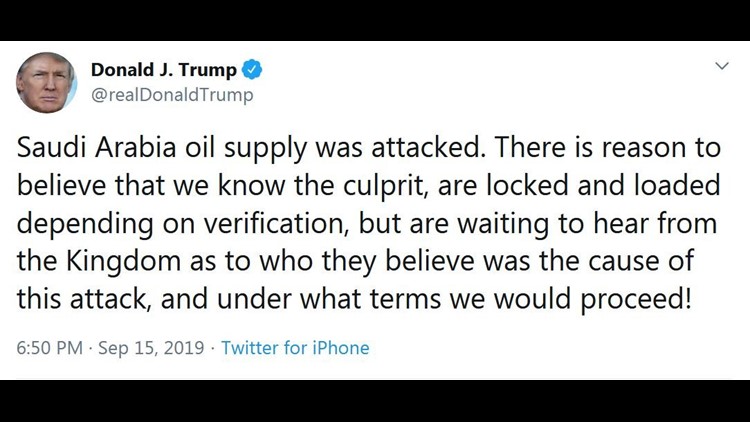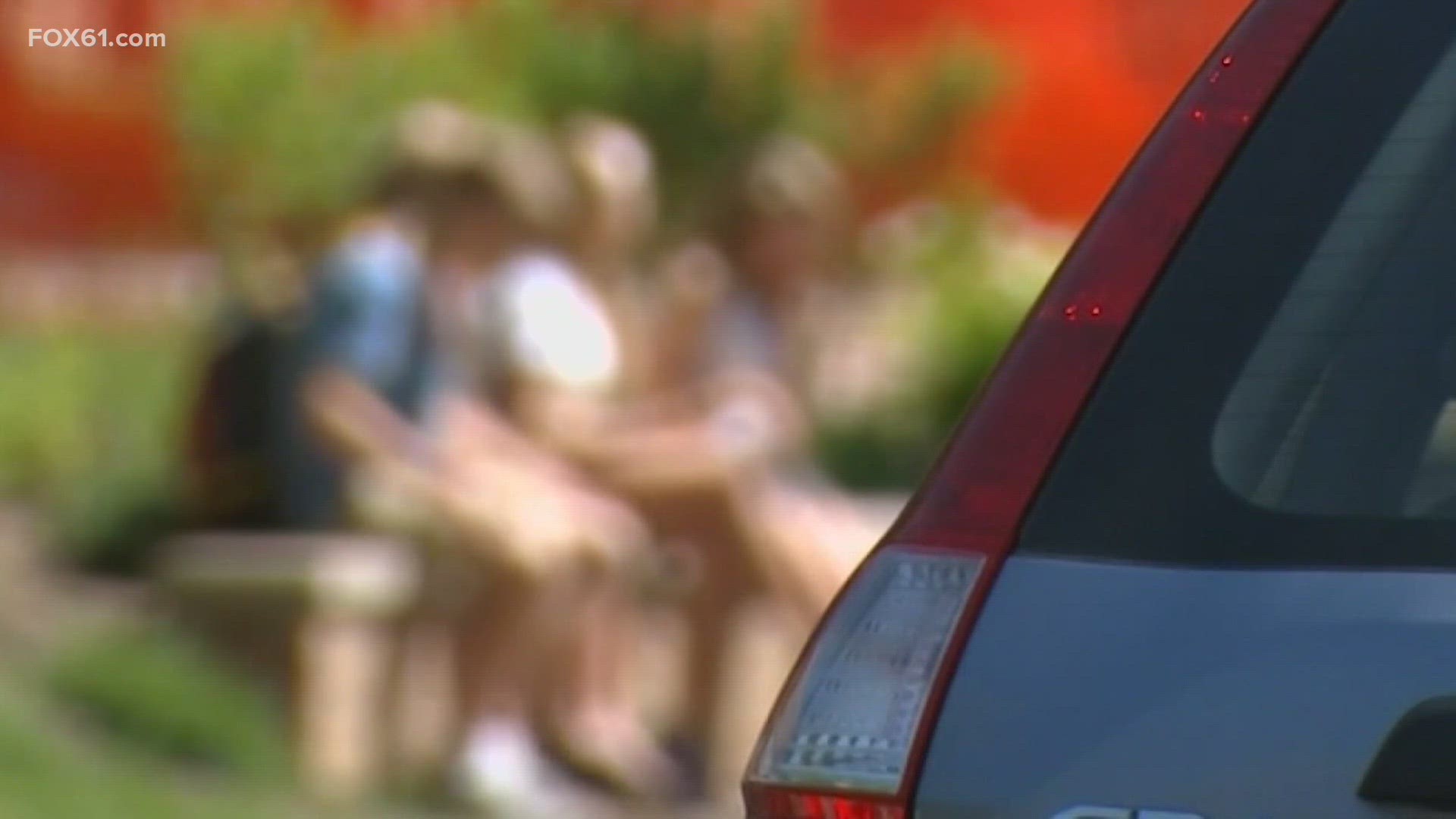President Donald Trump on Sunday evening tweeted that the US has “reason to believe that we know” who is responsible for an attack on a Saudi Arabian oil field and the country is “locked and loaded depending on verification” following the crippling strike.
“Saudi Arabia oil supply was attacked. There is reason to believe that we know the culprit, are locked and loaded depending on verification, but are waiting to hear from the Kingdom as to who they believe was the cause of this attack, and under what terms we would proceed!” Trump said.
Trump’s tweet, which appeared to raise the specter of a US military response, served to ratchet up tensions in a region already on edge after Saturday’s audacious attack on the Saudi oil field.
Trump used similar language in June when he announced he had called off an attack on Iran just as the US was “cocked & loaded” to strike because he decided it would cause too many deaths for a proportionate response to Tehran’s downing of a US drone.
On Saturday, coordinated strikes on key Saudi Arabian oil facilities — among the world’s largest energy production centers — disrupted 5% of the daily global oil supply. Yemen’s Houthi rebels took responsibility for the attacks, but they are often backed by Iran.
Though Trump did not name Iran in his tweet, the attack has caused another spike in tensions between the US and Tehran. Prior to Saturday there were signs the US appeared open to new negotiations and even a potential meeting later this month between Trump and Iranian President Hassan Rouhani.
A day after Secretary of State Mike Pompeo blamed Iran for the attack on Saudi oil facilities and argued there is “no evidence the attacks came from Yemen,” a senior administration official briefed CNN on information to back up Pompeo’s claims. Pompeo did not provide evidence, but the official pointed to satellite imagery provided to CNN showing the oil facilities were struck from the northwest, suggesting an attack from Iraq or Iran, among other information.
On Saturday, Iranian foreign ministry spokesman, Seyyed Abbas Mousavi, rejected the accusation that Iran was behind the attack.
“Such blind accusations and inappropriate comments in a diplomatic context are incomprehensible and meaningless,” he said, adding, “even hostility needs a certain degree of credibility and reasonable frameworks, US officials have also violated these basic principles.”
Iran’s foreign minister took to Twitter to issue a similar denial.
“Having failed at “max pressure”, @SecPompeo’s turning to “max deceit,” Javad Zarif wrote. “US & its clients are stuck in Yemen because of illusion that weapon superiority will lead to military victory. Blaming Iran won’t end disaster. Accepting our April ’15 proposal to end war & begin talks may.”
Trump tweeted later Sunday that it is “incorrect” to say he is “willing to meet with Iran, ‘No Condition,'” a contradiction of his own administration. Treasury Secretary Steven Mnuchin said Thursday that the President, “has said he would sit down with Rouhani with no conditions.”
Points of impact
The official pointed to the angle at which Saudi oil facilities were attacked, the numbers of points of impact and other information to argue that it is unlikely the attacks were carried out by Yemen. Instead, the official suggested the attack most likely originated in Iran or Iraq.
“It is very difficult to see how these things could have come from anywhere but Iran or Iraq,” the senior administration official said.
The official said 19 Saudi targets were struck in Saturday’s attack and argued that such an attack could not be carried out with 10 drones, which the Houthis claimed to have used.
“You can’t hit 19 targets with 10 drones like that,” the official said.
The official, drawing on commercial satellite imagery shared with CNN, also noted that “all the points of impact on Saudi facilities were on the northwest side of them, which is somewhat difficult to do from Yemen.” The official could not say whether it’s possible drones from Yemen could have angled around to attack northwest facilities.
Military experts examine commercial satellite images
Three CNN military experts have examined the private satellite photos.
Ret. Col. Cedric Leighton, who is an intelligence expert with a focus in imagery, said the images do help support the Trump administration’s claim that the drones likely came from Iraq or Iran, but cautioned that they’re not definitive.
“This is the handiwork of a sophisticated (most likely State) actor. The precise nature of the intelligence used to conduct targeting, the mission planning that went into this to avoid radar detection, as well as the selection of the targets shows a robust capability that would most likely be the work of a government or government-sponsored group,” Leighton told CNN Sunday.
“The drones most likely originated in either Southern Iraq or Iran,” he said.
Ret. Gen. Mark Hertling said the images “really don’t show anything, other than pretty good accuracy on the strike of the oil tanks. Ret. Adm. John Kirby echoed this point, stating “there is nothing I see in these pictures which confirms a launch from any particular location.”
“I’m struck by the precision of the strikes. Almost pin-prick,” Kirby said. “Certainly possible with (unmanned aerial vehicles). But again, that doesn’t really confirm anything.”
Iran’s response
Rouhani did not specifically reference the attack on the Saudi Arabia’s oil facilities in an address on Iran’s Press TV Sunday but did accuse Americans of running a “war operation” by “supporting the UAE and Saudi Arabia, transferring weapons, and providing intelligence.”
“What is happening in this region today has created concern among majority of world countries,” he said.
Earlier Sunday White House senior counselor Kellyanne Conway said Trump has “many options on the table” when it comes to responding to the strike on Saudi Arabia’s oil production this weekend.
“The President will always consider his options,” Conway said on “Fox News Sunday” when asked if Trump would still sit down with Rouhani under current circumstances. “We’ve never committed to that meeting at the United Nations General Assembly. The President’s just said he’s looking at it.”



